
|
Olympus E-30 Image Samples — Part 2 |

|
My other articles related to the |
|
Here are some more sample images from the E-30. If not stated otherwise, the image pipeline settings are at default values. These are more casual images, all shot handheld, with Image Stabilization on. See also my E-30 Image Samples, Part 1 for some general remarks on image samples and on how I;m presenting them here. This article shows E-30 images grouped in three sections:
As you may remember, I have good feelings about this lens; while not a match for the 50-200 mm F/2.8-3.5 ZD or the 300 mm F/2.8 ZD (price: ouch! weight: ouch!), it provides civilized image quality at a ridiculously low price, being relatively compact and lightweight. Still, this is about the camera, not lens, therefore I'm not trying to show off the latter's resolution but rather what the camera does for image quality: tonality, contrast, noise, etc. |
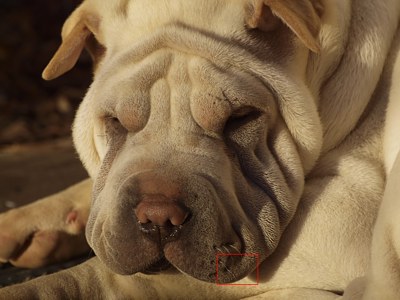
|
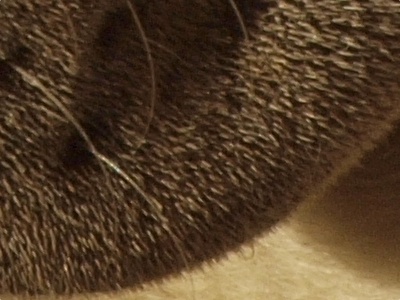
| |
| [1] 70-300 mm F/4.0-5.6 ZD at 239 mm; aperture priority (0 EV): 1/800 s at F/8.0, ISO 400; sunny WB, sharpness and contrast at N-1; noise filtering at Low | ||
|
A friend's puppy: colors quite warm, which is not surprising: late afternoon in February. Under such circumstances I prefer a general warm tinge to colors compensated towards more neutral; this is why even in this light I keep the manual WB at 5300°K (sunny). |
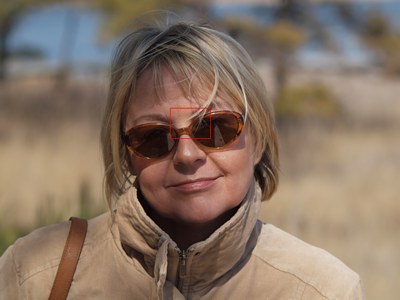
|
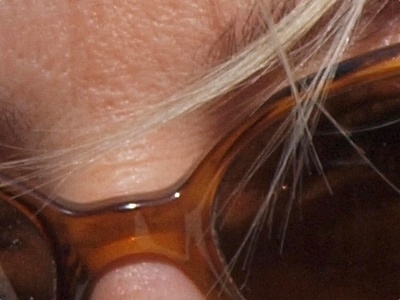
| |
| [2] 70-300 mm F/4.0-5.6 ZD at 300 mm; aperture priority (0 EV): 1/800 s at F/5.6, ISO 200; sunny WB, sharpness at N-1, contrast at N-1; noise filtering at Low | ||
|
Outdoors skin tones: natural and not overdone. Moderate contrast, smooth transitions. Something I would expect from a well-tweaked imaging pipeline. Still, if I want a picture like this to become more flattering, I resort to the only one-click, prefabricated filter I ever use: the Glamour filter in Paint Shop Pro. It is effective but not overdone; you may compare the before and after versions in XGA size, with no other adjustments applied. |
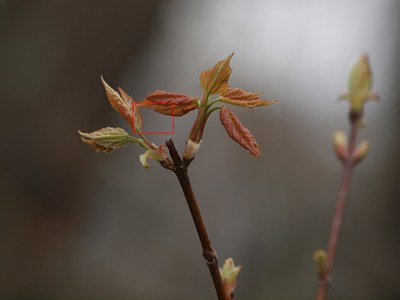
|
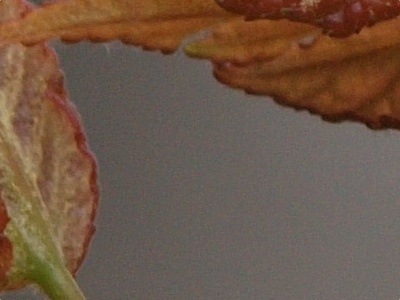
| |
| [3] 70-300 mm F/4.0-5.6 ZD at 133 mm; aperture priority (-0.3 EV): 1/400 s at F/7.1, ISO 400; sunny WB, sharpness and contrast at N-1; noise filtering at Low | ||
|
The out-of-focus background in this sample (and the two which follow) gives you a good idea of the noise at ISO 400: visible at this magnification, but fine-grained and regular. Just remember that what you see at the right would be a part of a 31.5×42" (80×107 cm) full-frame print. |
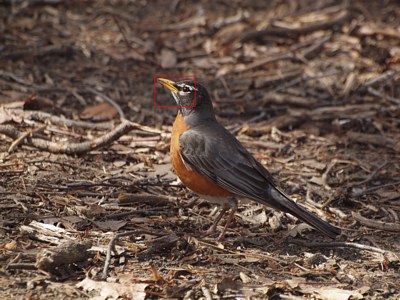
|
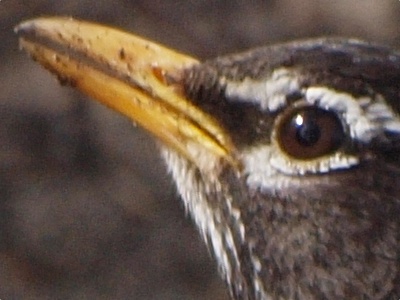
| |
| [4] 70-300 mm F/4.0-5.6 ZD at 300 mm; aperture priority (-0.3 EV): 1/500 s at F/7.1, ISO 400; sunny WB, sharpness and contrast at N-1; noise filtering at Low | ||
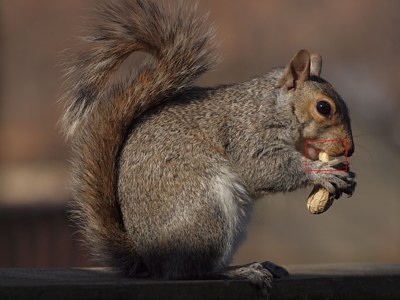
|
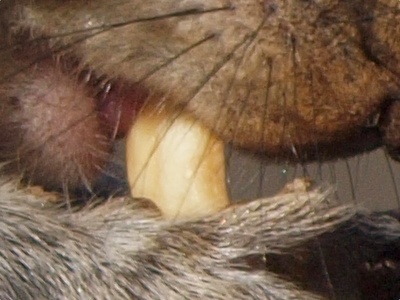
| |
| [5] 70-300 mm F/4.0-5.6 ZD at 202 mm; aperture priority (-0.3 EV): 1/1250 s at F/8, ISO 400; sunny WB, sharpness and contrast at N-1; noise filtering at Low [full frame] | ||
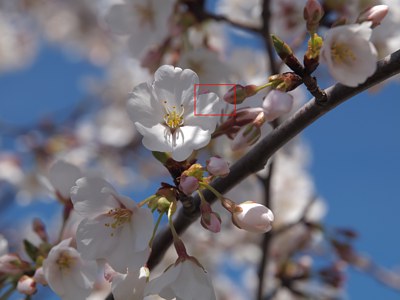
|
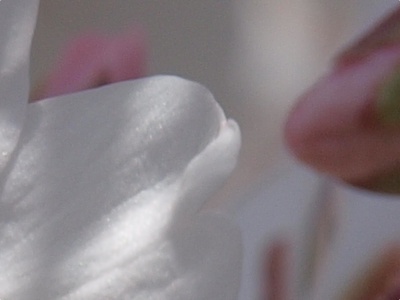
| |
|
[6] 12-60 mm F/2.8-4.0 ZD at 60 mm; aperture priority (+.3 EV): 1/320 s at F/8.0, ISO 100; sunny WB, sharpness at N-1, contrast | ||
|
Well, well, well; I like what I see here. The whites are perfect, and so are various shades of pink. The sky is not overdone. The positive exposure compensation of 0.3 EV was used to keep the general tonality of the image well above medium, and manual white balance will always be the best way to get consistent results. |
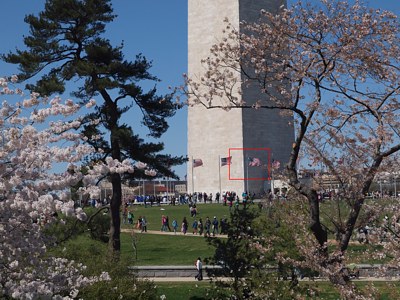
|
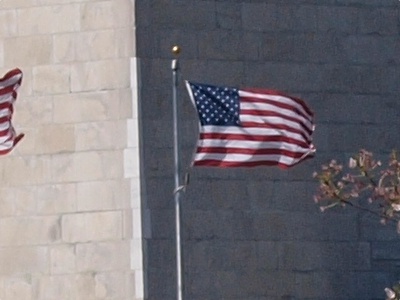
| |
| [7] 12-60 mm F/2.8-4.0 ZD at 40 mm; aperture priority (0 EV): 1/1250 s at F/7.1, ISO 200; sunny WB, sharpness and contrast at N-1; noise filtering at Low [full frame] | ||
|
The second shot was at ISO 200 (which probably is the sensor's native sensitivity). While this should result in the widest dynamic range, I see no practical difference between this and ISO 100. |
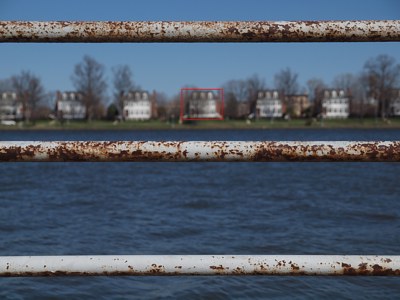
|
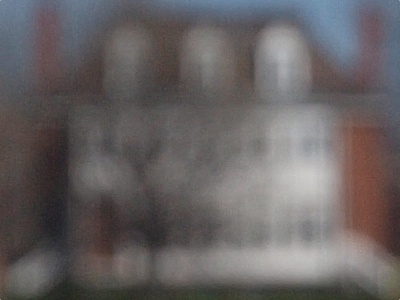
| |
| [8] 12-60 mm F/2.8-4.0 ZD at 36 mm; aperture priority (-0.7 EV): 1/6400 s at F/3.7, ISO 200; sunny WB, sharpness and contrast at N-1; noise filtering at Low | ||
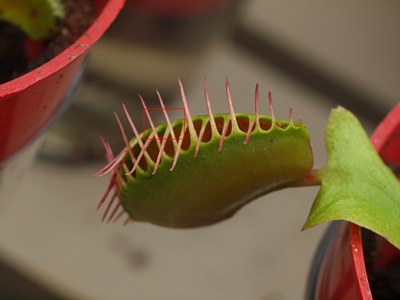
|
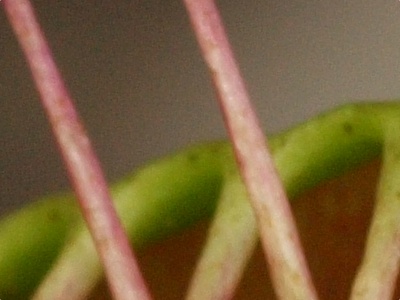
| |
| [9] 50 mm F/2.8 Macro ZD; aperture priority (-0.3 EV): 1/60 s at F/11, ISO 400; sunny WB, sharpness at V-2, contrast at V±0; noise filtering at Low [full frame] | ||
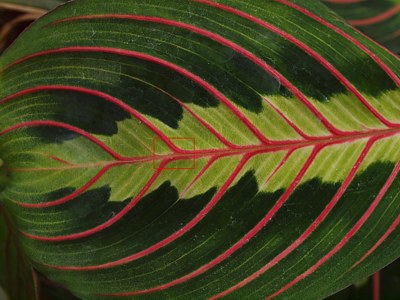
|
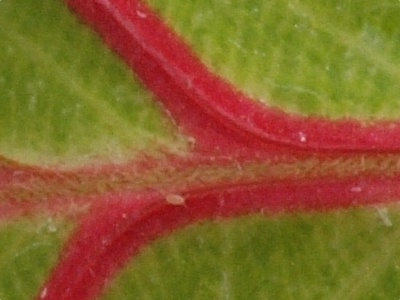
| |
| 50 mm F/2.8 Macro ZD; aperture priority (-0.7 EV): 1/160 s at F/8, ISO 400; sunny WB, sharpness at V-2, contrast at V±0; noise filtering at Low | ||
|
The Venus flytrap turned out just fine, and the increased color saturation is OK (even if I could obtain the same effect by enhancing it from the in-camera JPEG). The brightly-colored leaf came out nicely, too, as I remembered to increase the negative exposure compensation (after all, this is a darker-than-average subject). So far so good. |
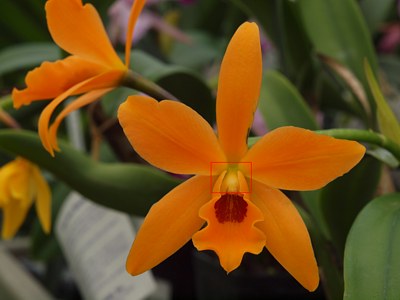
|
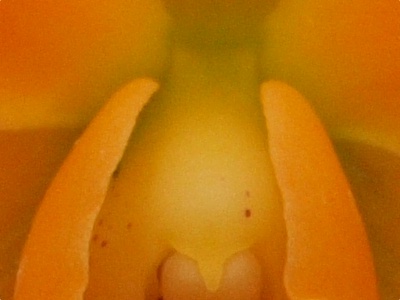
| |
| [10] 12-60 mm F/2.8-4.0 ZD at 60 mm; aperture priority (-0.3 EV): 1/160 s at F/11, ISO 400; sunny WB, sharpness at V-2, contrast at V±0; noise filtering at Low | ||
|
Some orchids can be tough on a digital camera (or on film; anyone claiming that the film captures the color "as it is", as opposed to digital, is just uninformed). This one certainly is. While -0.3 EV of exposure compensation was enough to protect the red channel of clipping, and the tonal transitions are quite nice, a close scrutiny detects some discontinuity (if not quite posterization) in the color gradient shown in the fragment at the right. (This is where a depth of more than 12 bits per color would, most probably, help.) |
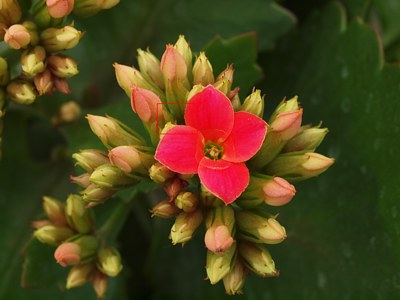
|
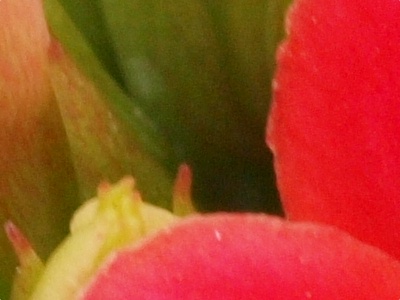
| |
| [11] 50 mm F/2.8 Macro ZD; aperture priority (-0.3 EV): 1/40 s at F/11, ISO 400; sunny WB, sharpness at V-2, contrast at V±0; noise filtering at Low | ||
|
Now we come to the subject where the E-30 gives up (but I'm hard pressed to find a camera which doesn't). Yes, the blossoms in the background are close to perfect, but the red petals in the foreground are hopelessly devoid of any detail. Worse, in some places the red gets an admixture of purple. Maybe I should have tried a bit more of negative exposure compensation, but I'm not so sure. This is a flower I've been trying to get right since 2001 — not this year. |
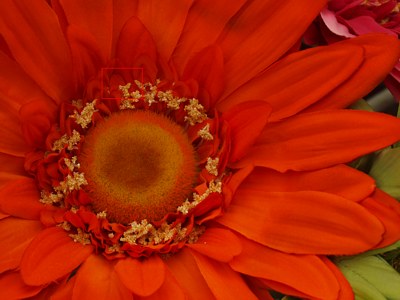
|
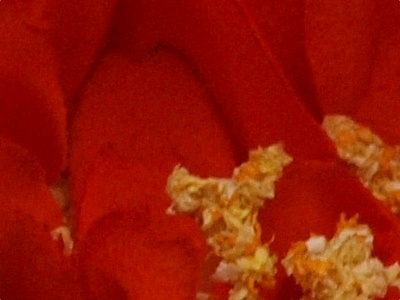
| |
| [12] 50 mm F/2.8 Macro ZD; aperture priority (-0.7 EV): 1/160 s at F/8, ISO 400; sunny WB, sharpness at V-2, contrast at V±0; noise filtering at Low [full frame] | ||
|
Another common troublemaker; this time I could see that most of the image uses almost exclusively the red channel, hence the -0.7 EV exposure compensation. The histogram shows no clipping in reds, though, and the subtle red-to-red transitions are rendered surprisingly well (even if they could have been improved with more bits per channel). This is better than I expected, a very pleasing result. Now, back to the Natural Picture Mode, which I find most to my liking for any applications. First, one more orchid. |
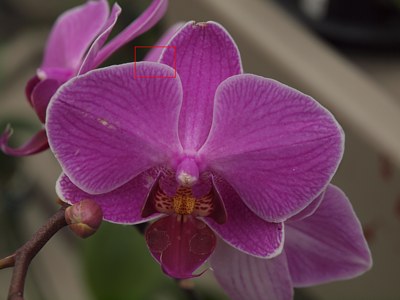
|
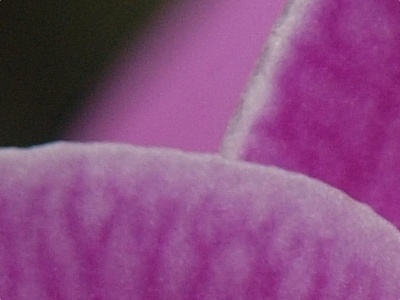
| |
| [13] 12-60 mm F/2.8-4.0 ZD at 60 mm; aperture priority (-0.3 EV): 1/200 s at F/7.1, ISO 200; sunny WB, sharpness and contrast at N-1; noise filtering at Low | ||
|
This is not a tough subject, and I'm not surprised the colors are just fine, if on a quiet side. Other less demanding subjects included some trinkets displayed among plants in the hothouse. Less demanding, indeed, as I find man-made colors easier on digital or film-based imaging than many of those provided by Mother Nature. All these pictures were shot in the Natural Picture Mode and the E-30 took them in a stride: |

|
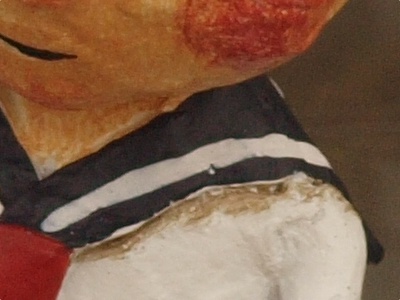
| |
| [14] 12-60 mm F/2.8-4.0 ZD at 60 mm; aperture priority (-0.3 EV): 1/160 s at F/9.0, ISO 400; sunny WB, sharpness and contrast at N-1; noise filtering at Low [full frame] | ||
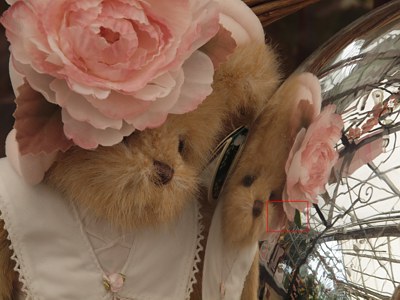
|
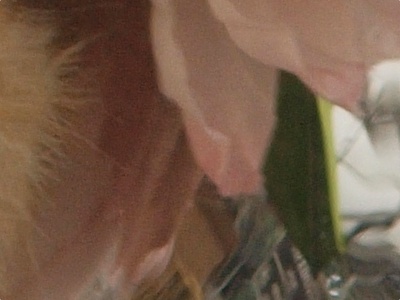
| |
| [15] 12-60 mm F/2.8-4.0 ZD at 56 mm; aperture priority (-0.3 EV): 1/200 s at F/9.0, ISO 400; sunny WB, sharpness and contrast at N-1; noise filtering at Low | ||
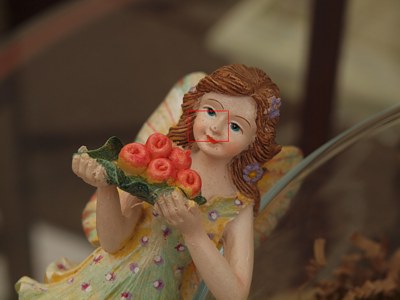
|

| |
| [16] 12-60 mm F/2.8-4.0 ZD at 60 mm; aperture priority (-0.3 EV): 1/125 s at F/9.0, ISO 400; sunny WB, sharpness and contrast at N-1; noise filtering at Low [full frame] | ||
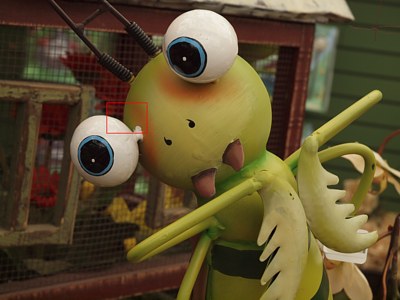
|
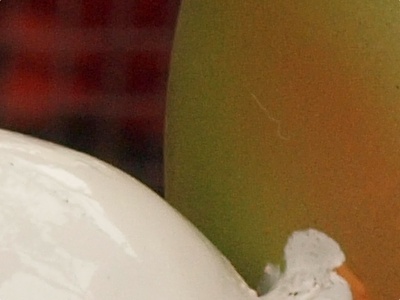
| |
| [17] 12-60 mm F/2.8-4.0 ZD at 42 mm; aperture priority (-0.3 EV): 1/80 s at F/9.0, ISO 400; sunny WB, sharpness and contrast at N-1; noise filtering at Low. | ||
|
Indeed, the trinket pictures show the E-30 at its best. The colors are subtle yet not dull, and tonal transitions smooth. A most pleasing job. Remember that these were straight in-camera JPEGs, without any manipulation (except, obviously, for resizing or cropping, as always in my sample presentation). While I (almost) always use this format in shooting, I submit all pictures to some, usually slight, postprocessing. Who said you can postprocess only images saved raw? My Garden Store Gallery page shows some of the last samples postprocessed, in the 1024×768 (XGA) pixel size; you may want to have a look. More E-30 image samples More samples from this camera can be found in other articles at my site:
|

|
My other articles related to the |
|
Olympus® is a registered trademark of Olympus Corporation.
This page is not sponsored or endorsed by Olympus (or anyone else) and presents solely the views of the author. |
| Home: wrotniak.net | Search this site | Change font size |
| Posted 2009/04/21 | Copyright © 2009 by J. Andrzej Wrotniak |